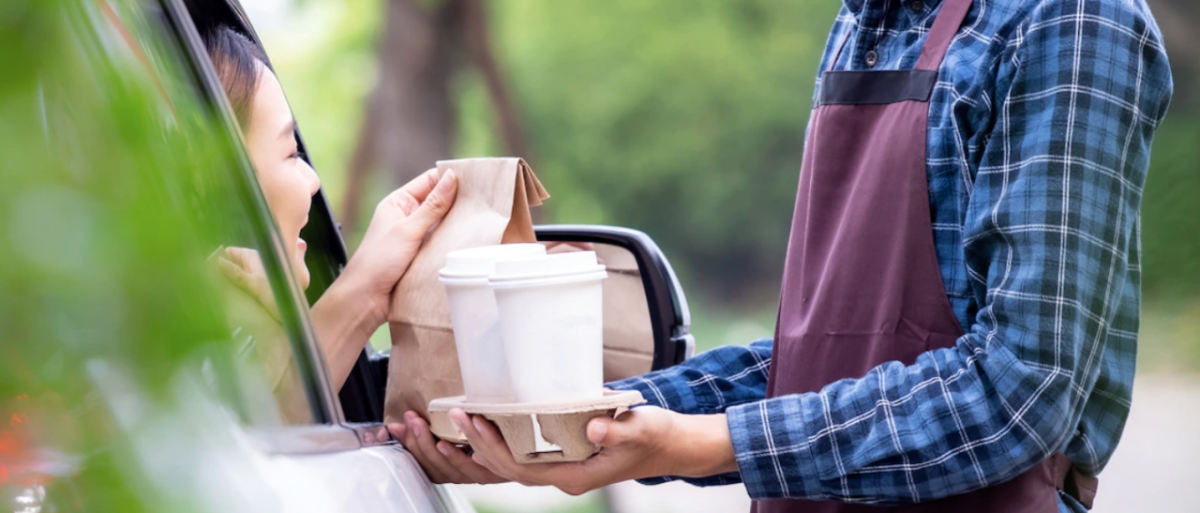Tork Offers Expert Guidance for Restaurants to Secure Safer Takeout and Delivery Operations
Leading global professional hygiene brand, Tork, is offering tips and a dedicated resource website for restaurants to boost their off-premise business

Consumer behavior has shifted toward off-premise dining in recent years, and the pandemic has accelerated this trend. Quick Service Restaurants (QSRs), which have takeout and delivery infrastructure, have taken advantage of this shift amid public health guidance. On the other hand, Full-Service Restaurants (FSRs), which specialize in dine-in experiences, are in a more vulnerable position. In light of dining restrictions and continued consumer preferences for off-premise dining, FSRs must now pivot to off-premise services like takeout and delivery. According to a study by NPD, there has been a large jump in takeout orders, from 18%-60% within the FSR segment from 2019 to 2020 in the U.S.1
“The increased demand for off-premise dining is an opportunity for restaurants,” says Di Neal, industry expert and North America Foodservice Marketing Manager at Essity, the manufacturer of the Tork brand. “The QSR segment has had an advantage, as these restaurants have been working with these kinds of services for years. But it is time that the whole industry seizes this opportunity and adapts to the shifting consumer behavior.”
According to a recent research by Essity, 60% of restaurant patrons will have higher expectations of restaurants’ hygiene standards in the future.2 Therefore, it is critical for restaurants to guarantee a hygienic experience and clearly communicate their efforts to guests. To help both QSRs and FSRs respond to this new standard of hygiene, Neal offers five tips for safer takeout and delivery:
- Design your restaurant for safety. Place hand sanitizing stations where guests are entering and exiting the restaurant. For takeout or curb-side pickup, maintain social distancing between guests by having separate areas for ordering and pickup. In the kitchen, always check to ensure handwashing stations are fully stocked with soap and paper towels at the start of each shift.
- Assess your packaging and hygiene products. Train staff to handle takeout bags with care, just as they would when preparing food. Create procedures to promote proper hand hygiene and minimize the risk of cross-contamination. For instance, putting a tamper-proof seal on the bag is an easy way to show to guests that their food has not been touched or altered since leaving the kitchen. You can also consider adding individually wrapped napkins to make sure that customers get napkins that are hygienic and untouched.
- Communicate your efforts. Educate guests about your efforts to ensure their food is safe from the kitchen to their table. You can even send notes with orders to let guests know what measures you've taken to ensure their food is safe and to thank them for their support. It’s important for restaurants to continue building an emotional connection with guests whether they are dining on or off-premise.
- Ensure delivery personnel have a good hygiene routine. If working together with a third-party delivery company, look into their food safety handling policy, since they will become part of your food journey. For restaurants operating their own delivery fleet, it is important to ensure that delivery staff has sufficient food safety knowledge and personal protective equipment (PPE) to protect both workers and guests. Having a delivery toolkit with face masks, sanitizer bottles, paper towels, and napkins can also help improve safety and hygiene.
- Think beyond a traditional kitchen environment. Over half (53%) of operators used a ghost kitchen for delivery orders during lockdown.3 Further, 52% of global consumers report being comfortable with ordering from a delivery-only restaurant with no physical storefront.4 Since most ghost kitchens have limited space and work with on-demand staff and third-party delivery companies, it is imperative to put hygiene front and center at every step of the food journey to ensure an efficient workflow and safe food handling.
Tork has launched a dedicated resource webpage with industry knowledge and tips to help restaurants secure hygiene for off-premise dining – from the kitchen to the handover. The page includes a guide with information on how to secure safer takeout and delivery, a poster on hand hygiene, a sign for pickup stations, instructions on how to use QR codes, and other useful materials for restaurant staff. For more information and to access these resources, visit https://www.torkusa.com/off-premise.
1Source: NPD Group/CREST®, October 2020
2Source: Essity Essentials Initiative Survey 2020-2021 (LINK)
3Source: Technomic Foodservice Impact Monitor 8th Edition—Week Ending May 8, 2020
4Source: Euromonitor, 2020
For additional information please contact:
Lizzie Kölln
Weber Shandwick
ekolln@webershandwick.com
About Tork®
The Tork brand offers professional hygiene products and services to customers worldwide ranging from restaurants and healthcare facilities to offices, schools and industries. Our products include dispensers, paper towels, toilet tissue, soap, napkins, wipers, but also software solutions for data-driven cleaning. Through expertise in hygiene, functional design and sustainability, Tork has become a market leader that supports customers to think ahead so they’re always ready for business. Tork is a global brand of Essity, and a committed partner to customers in over 110 countries. To keep up with the latest Tork news and innovations, please visit: www.torkusa.com.
About Essity
Essity is a leading global hygiene and health company. We are dedicated to improving well-being through our products and services. Sales are conducted in approximately 150 countries under the leading global brands TENA and Tork, and other strong brands, such as JOBST, Leukoplast, Libero, Libresse, Lotus, Nosotras, Saba, Tempo, Vinda and Zewa. Essity has about 46,000 employees. Net sales in 2020 amounted to approximately $13.8 billion. The company's headquarters is located in Stockholm, Sweden, and Essity is listed on Nasdaq Stockholm. Essity breaks barriers to well-being and contributes to a healthy, sustainable and circular society. More information at www.essity.com.

